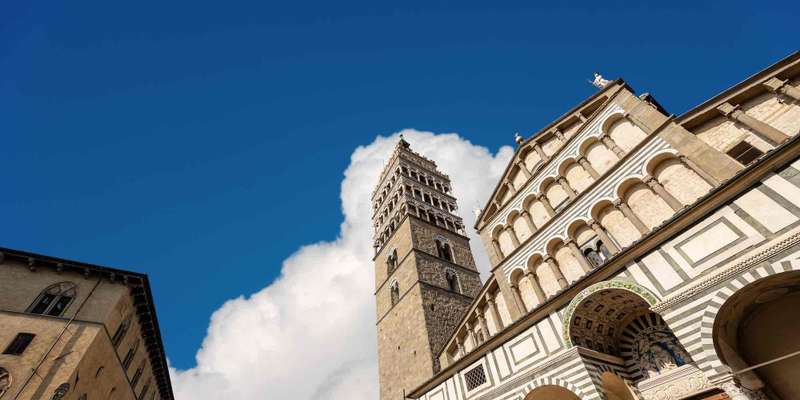- Home
- Useful Tips
- Where to experience Pistoia's...
Every autumn, travelers miss out on Pistoia's centuries-old olive harvest traditions due to limited public information. Over 78% of Tuscan agriturismos don't advertise harvest participation opportunities online, leaving visitors to settle for generic oil tastings rather than immersive experiences. The frustration mounts when you realize nearby travelers are hand-picking olives with multigenerational farmers while you're stuck on crowded commercial tours. This disconnect means missing the heart of Tuscan culture - the rhythmic beat of harvest songs, the scent of freshly pressed oil, and the warmth of shared farm meals that no sterile tasting room can replicate. Without local knowledge, you risk arriving either too early for the harvest or too late for the festive frantoio (mill) openings that transform this agricultural process into a community celebration.


Timing your visit for the authentic harvest experience
The window for Pistoia's olive harvest is narrower than most travelers realize, typically spanning just 3-4 weeks between late October and mid-November. Local farmers watch their frantoioia (unripe olives) like hawk - the moment they achieve perfect veraison (color change) determines the harvest's start date. Visiting in early October often means finding orchards still heavy with green fruit, while December arrivals miss the frantic energy of daily harvests. Microclimates matter too; hillside groves around Collodi mature 10 days earlier than valley plantations. Savvy travelers coordinate with agriturismos that offer harvest alerts, ensuring you book accommodations when your chosen farm switches from 'almost ready' to 'bring your baskets'. The sweet spot? Aim for November 5-20 when most estates hit peak activity, with the bonus of fewer morning mists than late-season visits.
Finding working farms that welcome harvest volunteers
Contrary to popular belief, many Pistoia growers still embrace the traditional raccolta a mano (hand-picking) method and appreciate extra hands. The trick is identifying small-to-medium estates rather than industrial producers - look for Fattorie Didattiche (educational farms) certified by Tuscany's agricultural board. These family-run operations often incorporate visitors into their harvest routines, teaching proper net-spreading techniques and the art of selecting only the healthiest olives. Some require advance booking through regional agritourism associations, while others accept same-day participants if you arrive by 7am with sturdy shoes. The unspoken rule? Willingness to work earns you invitations to the post-harvest merenda (snack) where new oil gets drizzled over warm bread. A few estates even trade labor for discounted oil purchases - an arrangement never advertised but often available to respectful visitors.
Dressing and preparing like a local harvester
Pistoia's autumn weather demands strategic layering that most tourists overlook. Mornings start chilly (5-8°C) in the orchards but warm significantly by midday - seasoned harvesters swear by the 'three-layer rule': moisture-wicking base, insulating fleece, and windproof outer shell. The real secret lies in accessories: fingerless gloves protect hands while maintaining dexterity, and knee pads prove invaluable during hours of low-branch picking. Locals always pack a spare pair of socks; morning dew soaks through even waterproof boots. Women farmers often wear wide-brimmed hats with neck flaps - not for fashion, but to prevent falling olives from bouncing down collars. Before arriving, practice the proper grip: olives should roll gently into your palm to avoid bruising, as damaged fruit alters oil acidity. Most farms provide baskets and nets, but bringing your own telescopic picking rod (available at Pistoia's Wednesday market) shows admirable preparedness.
From orchard to mill - completing the oil journey
The true magic unfolds after the harvest, when farms truck their day's pickings to communal frantoi. Few travelers realize these mills operate 24/7 during peak season, with the most atmospheric visits occurring after sunset when farmers gather to monitor their oil's extraction. In Pistoia's countryside, the Frantoio di Groppoli welcomes observers for its 8pm-2am shifts - the golden hour being around 10pm when the first pressing emerges. You'll witness the transformative moment as green mash separates into vibrant oil, accompanied by the miller's quality assessment (sniffing for grassiness, tasting for pepperiness). Some mills sell 'day-old oil' at significant discounts, its flavor more robust than store-bought versions. For the ultimate souvenir, bring a dark glass bottle to fill directly from the decanting tap - unlike commercial oils, this unfiltered 'newborn' liquid contains suspended micro-droplets that create a shimmering effect in sunlight.
